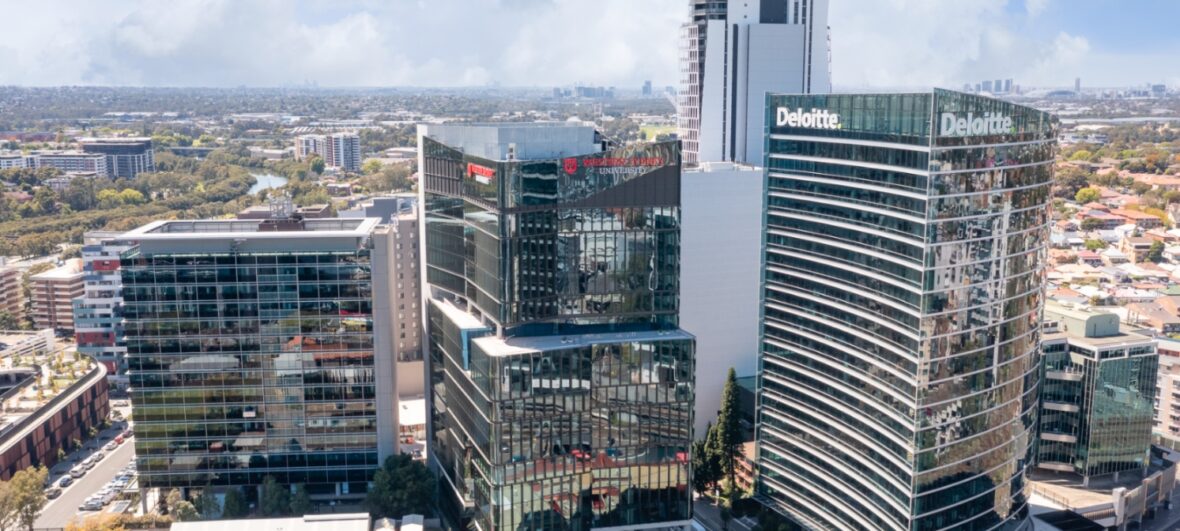Rapidly evolving building technology is changing how to plan and design the next generation of buildings to thrive in a net zero society.
We sat down with AECOM’s Hannah George and Julia Curtain, leaders in AECOM’s Buildings + Places and Information and Communications Technology teams, respectively, to learn more about industry trends and the opportunities ahead.
1. What are the key challenges and opportunities for the industry?
Hannah: Investment and a real commitment to change are key challenges. Moving from a position of low capital cost to full lifecycle value takes leadership and legislative change. Unsurprisingly, those championing change are asset owners looking for long-term benefits; if part-time players are to remain (such as commercial developers and project participants like AECOM), profits must be linked to longer-term goals.
Increasing the diversity of people involved in construction and buildings is a fantastic opportunity for the industry to bring innovative ideas and springboard for innovation, which, in the past, have stagnated in a risk-averse industry environment.
Julia: A key challenge will be showing the industry convincing data that deploying passive and active solutions to decrease carbon emissions is financially viable and should be seen as the norm rather than the exception.
2. What trends are you seeing across the building industry that support ESG objectives?
Hannah: I’m noticing an increased emphasis on accountability. Increased reporting on ESG, energy, carbon, cyber, and other areas means we need good, normalised data to be deemed credible and responsible. A spreadsheet is not going to cut it. Asset and material tracking and reuse are growing trends. We must do more with less and act responsibly with the earth’s resources we have in our possession, from cradle to grave. Powered by the Internet of Things, radio frequency identification (RFID) and various other technologies, tracking and reuse are becoming progressively easier.
Julia: I think it’s brilliant that the building industry is now aware of more options to decrease carbon emissions, such as adaptive reuse of existing buildings and using passive solutions, like sealed façade, triple glazing, and insulation, alongside active solutions, such as using technology to monitor and adapt operations and maintenance regimes. This has shifted traditional building services to a more integrated offering as ESG touches all disciplines, particularly ICT. Accreditations such as the Living Building Challenge have changed their focus from being carbon neutral to benefiting the environment, such as generating more energy than is needed in that building and capturing more water than is required. In time, technology and passive solutions will be even more integrated to meet and surpass ESG requirements to become environmentally positive and regenerative.
3. What can companies focus on now to consider the needs of the buildings of the future?
Hannah: Passive and biophilic design, electrification, mixed and change of use, increased data, and smart building technology should all be front of mind. With any future planning, it’s about not being “built out.” Conduct studies and master plans. Draw a line in the sand where you stand today and where you think you might be in 10- or 30 years, with the aim of not outgrowing the facility, plan areas, slab height, growth space, enterprise architecture (IT) and other factors with that horizon in mind. Plans will change, but failing to plan ensures failure.
Julia: Buildings of the future will be more integrated, with all operations and maintenance being managed remotely, and will operate far more efficiently. Companies need to plan for this by ensuring that any new builds or retrofits are done with extensive planning to ensure that the building envelope is energy efficient and that there is adequate spatial allocation for comms rooms and pathways, as this infrastructure will be the key to operating efficiently and effectively.
About Hannah
Hannah is an automation and control engineer with over 20 years of experience in building technology design and delivery. She is a specialist in building technology, including structured cabling, security and CCTV, communications, audiovisual, functional requirements, and use cases for building technology. Working ‘on the tools’ with a major controls contractor, Hannah’s background has given her a practical understanding of technology delivery, having gained experience designing, installing, and commissioning numerous systems in hospitals, commercial and prison buildings. As a consultant, she has worked across various sectors, including retail, commercial, education, health, aviation, ports, government, defence, data centres and industrial building technology.
About Julia
An experienced technical specialist, Julia is a team lead, engineer, and project manager with more than 17 years of experience in engineering consulting. She has delivered a range of projects and programs across several industries, including rail, construction, water, and heavy industry.
Julia leads multidisciplinary teams undertaking ICT and Security designs in the built environment, working with Australian and International Standards to mitigate safety and risk on projects. She holds various voluntary roles in engineering industry bodies, Australian Standards development, and local council advisory.
